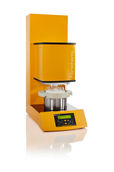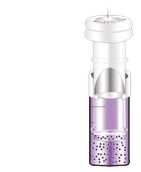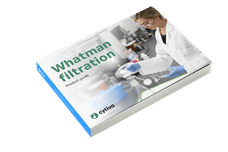On the way to lead-free technology
The change-over to lead-free products is in full progress. The problem is however that the environmentally friendly alternatives have to be as effi cient as the lead-containing variants. One example is the injection system of diesel engines. Lead-free functional materials can be found faster by means of computer simulation methods.
Technical progress in the automobile industry is unbroken. But, the sector has still some hard nuts to crack: “Lead-free materials” is one of the challenges – hidden behind this challenge is a EU environmental directive which, based on a step-by-step plan, gradually bans all lead-containing materials and components from automotive vehicles – such as piezoelectric components. These elements are important for diesel engine injectors, for example, which control the supply of fuel to the combustion chamber.
The problem: Up to now lead-zirconate-titanate (PZT) is the material of choice when fast switchable piezoelectric applications in cars are concerned. To find alternatives without containing the heavy metal of lead is not an easy task, however, because in raw condition all alternatively used materials still do not have the desired properties. A simulation approach which the researchers of Fraunhofer Institute for Mechanics of Materials IWM have developed gets the search going now: “We have to chemically and physically modify the potential candidates in such a way that in the end the replacement materials behave similarly well as the PZT“, says Professor Dr. Christian Elsässer, group leader at the IWM. A candidate such as this is potassium-sodium-niobate (KNN). Like PZT it is a ferroelectric monocrystal, but as technical ceramics with uncontrolled atom vacancies and grain boundaries in the crystal lattice, KNN is initially useless as a material. “For this reason, we have to make a virtue of necessity and have to introduce the right doping, i.e. foreign atoms, in order to improve the properties of the ceramic KNN,” says Christian Elsässer.
Where and how these doping atoms have to be introduced is figured out by the researchers by means of computer simulation: Different ferroelectric properties are obtained depending at which position of the crystal lattice the foreign atoms – such as copper – are placed. “At one position, the copper donates electrons, at another position it prefers to accept them. Dipoles are formed or they are not formed depending on the lattice position,“ explains Christian Elsässer. These solid-state physical parameters and a number of others shall be determined in advance. Researchers do this with the help of “physics in the computer”. This is by no means a trivial task because the quantum mechanical computations require complex atom model systems and big computer capacity. But on the other hand, a lot of time and money can be saved in the development of materials, because on the one hand fewer synthesis and analysis experiments in the laboratory are required. On the other hand computer simulation also produces important thermodynamic parameters for the sintering process, such as pressure and temperature ranges at which the components have to be manufactured. ”The engineers receive synthesis instructions for the material at the same time,” says the researcher.
In this way, the automobile industry can achieve the lead-free target faster. But not only this sector profits from Fraunhofer technology. Lead-containing materials are also present in frequency filters of mobile phone or in mechanical sensors and actuators. Ferroelectric capacitor components are competitive in the race for records when it comes to saving ever bigger data volumes on the smallest of space.
Other news from the department science
These products might interest you

FIBRETHERM by C. Gerhardt
Automatic Fibre Extraction for Feed Analysis
FIBRETHERM from C. Gerhardt: Efficient – Precise – Method-Compliant

Glass and quartz microfiber filter by Cytiva
Request a glass microfiber sample pack to meet your battery development needs
Delivering efficient and consistent results

Mini-UniPrep™ by Cytiva
Improved HPLC Sample Preparation
Save 66 % sample preparation time and reduce costs by 40 %

GF/C and 934-AH RTU (Environmental) by Cytiva
Meet wastewater regulations with the right filter
Streamline lab operations and ensure high-quality results

VICI Jour Katalog 15INT by VICI
The VICI Jour Catalog - Accessories for (U)HPLC and Liquid Handling
Capillaries, Tubing, Fittings, Filters, Safety-Products, Tools and much more

Hahnemühle LifeScience Catalogue Industry & Laboratory by Hahnemühle
Wide variety of Filter Papers for all Laboratory and Industrial Applications
Filtration Solutions in the Life Sciences, Chemical and Pharmaceutical Sectors

Whatman filtration product guide by Cytiva
New filtration catalog - a wealth of information on 286 pages
Discover the perfect filters for your laboratory application

Get the chemical industry in your inbox
By submitting this form you agree that LUMITOS AG will send you the newsletter(s) selected above by email. Your data will not be passed on to third parties. Your data will be stored and processed in accordance with our data protection regulations. LUMITOS may contact you by email for the purpose of advertising or market and opinion surveys. You can revoke your consent at any time without giving reasons to LUMITOS AG, Ernst-Augustin-Str. 2, 12489 Berlin, Germany or by e-mail at revoke@lumitos.com with effect for the future. In addition, each email contains a link to unsubscribe from the corresponding newsletter.
Most read news
More news from our other portals
See the theme worlds for related content
Topic world Synthesis
Chemical synthesis is at the heart of modern chemistry and enables the targeted production of molecules with specific properties. By combining starting materials in defined reaction conditions, chemists can create a wide range of compounds, from simple molecules to complex active ingredients.

Topic world Synthesis
Chemical synthesis is at the heart of modern chemistry and enables the targeted production of molecules with specific properties. By combining starting materials in defined reaction conditions, chemists can create a wide range of compounds, from simple molecules to complex active ingredients.
Topic world Sensor technology
Sensor technology has revolutionized the chemical industry by providing accurate, timely and reliable data across a wide range of processes. From monitoring critical parameters in production lines to early detection of potential malfunctions or hazards, sensors are the silent sentinels that ensure quality, efficiency and safety.

Topic world Sensor technology
Sensor technology has revolutionized the chemical industry by providing accurate, timely and reliable data across a wide range of processes. From monitoring critical parameters in production lines to early detection of potential malfunctions or hazards, sensors are the silent sentinels that ensure quality, efficiency and safety.


























































